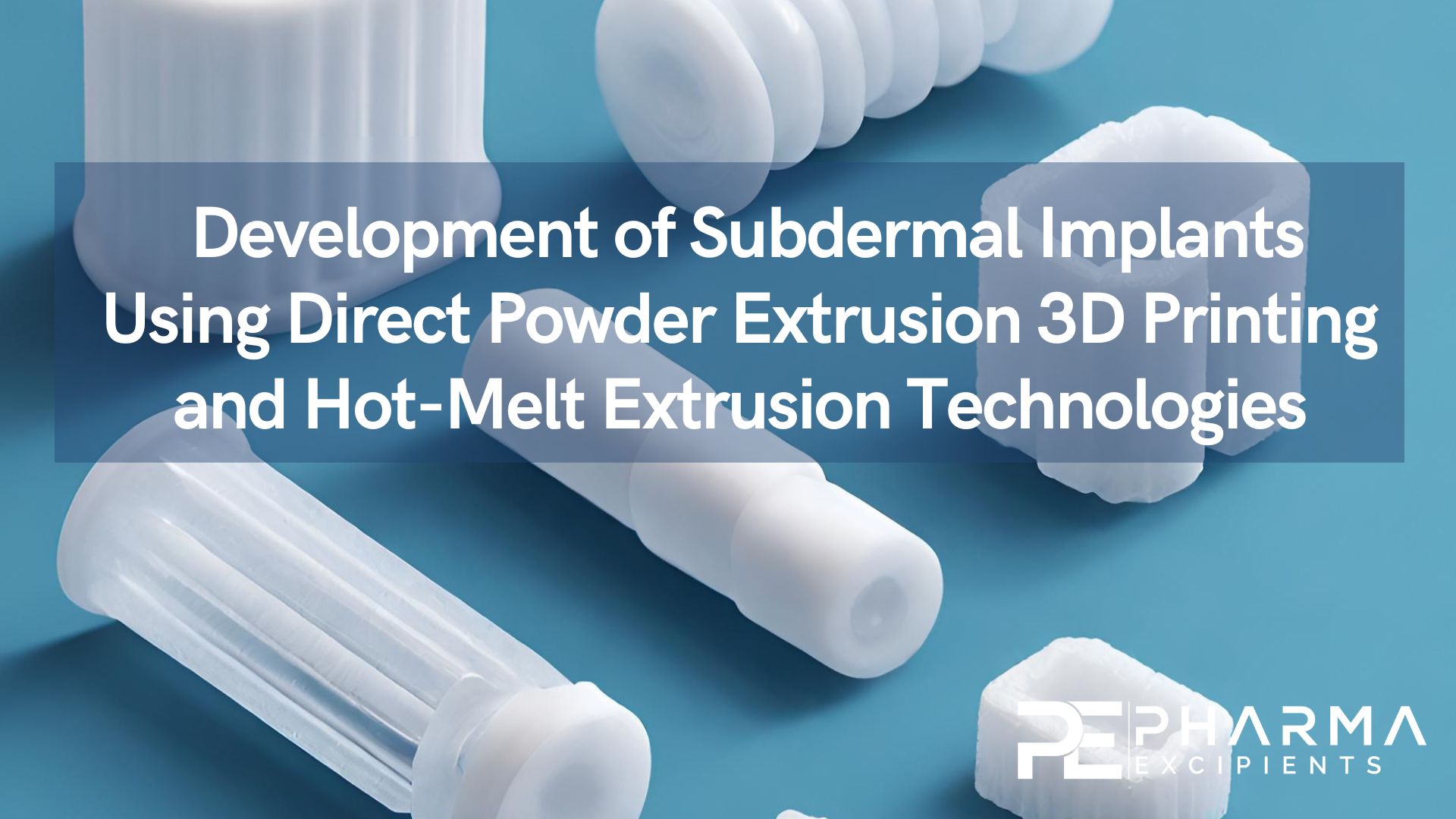Development of Subdermal Implants Using Direct Powder Extrusion 3D Printing and Hot-Melt Extrusion Technologies

Implants are drug delivery platforms that consist of a drug-polymer matrix with the ability of providing a localized and efficient controlled release of the drug with minimal side effects and achievement of the desired therapeutic outcomes with low drug loadings. Direct powder extrusion (DPE) 3D printing technology involves the extrusion of material through a nozzle of the printer in the form of pellets or powder.
The present study aimed at investigating the use of the CELLINK BIO X™ bioprinter using DPE 3D printing technique to fabricate and evaluate the impact of different shapes (cuboid, cylinder, and tube) of raloxifene hydrochloride (RFH)-loaded subdermal implants on the release of RFH from the implants. This study further evaluated the impact of different processing techniques, viz., hot-melt extrusion (HME) technology vs. DPE 3D printing technique, on the release of RFH from the implants fabricated by each processing technique. All the fabricated implants were characterized by XRD, DSC, SEM, and FTIR, and evaluated for their water uptake, mass loss, and in vitro RFH release. The current study successfully demonstrated a great opportunity of controlling and/or tuning the release of RFH from the subdermal implants by altering the implant shape, and hence surface area, and could be a great contribution and/or addition to the personalization of medicines and improvement of patient compliance.
Materials
Raloxifene hydrochloride (RFH), polyethylene oxide (PEO) N80 (molecular weight of 200,000), Soluplus®, methanol (HPLC grade), and Tween 20 were purchased from Fisher Scientific (Hanover Park, IL, USA). Hypromellose E4M and hydroxypropyl methylcellulose acetate succinate L grade (HPMCAS LG) were gifted from Ashland Global Specialty Chemicals Inc., (Wilmington, DE, USA). Polycaprolactone was purchased from Sigma-Aldrich Inc. (Saint Louis, MO, USA). Throughout the whole study, HPLC grade solvents and Milli-Q water were used.
Read more
Muhindo, D., Ashour, E.A., Almutairi, M. et al. Development of Subdermal Implants Using Direct Powder Extrusion 3D Printing and Hot-Melt Extrusion Technologies. AAPS PharmSciTech 24, 215 (2023). https://doi.org/10.1208/s12249-023-02669-7

